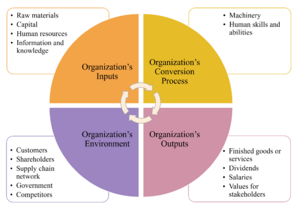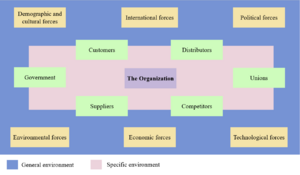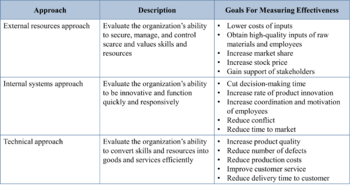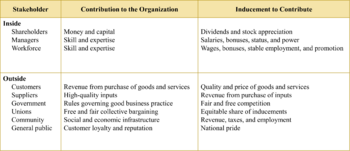Organizational context
(→Organizational Design) |
(→References) |
||
| Line 74: | Line 74: | ||
<ref name="Christian2017"> Geraldi, J., Thuesen, C., Oehmen, J., & Stingl, V. (2017). Doing Projects. A Nordic Flavour to Managing Projects. Danish Standards Foundation, 57-66. </ref> | <ref name="Christian2017"> Geraldi, J., Thuesen, C., Oehmen, J., & Stingl, V. (2017). Doing Projects. A Nordic Flavour to Managing Projects. Danish Standards Foundation, 57-66. </ref> | ||
| − | |||
| − | |||
<ref name="Shenhar1996"> Shenhar, A. J., & Dvir, D. (1996). Toward a typological theory of project management. Research policy, 25(4), 607-632. </ref> | <ref name="Shenhar1996"> Shenhar, A. J., & Dvir, D. (1996). Toward a typological theory of project management. Research policy, 25(4), 607-632. </ref> | ||
Revision as of 22:19, 17 March 2022
The organizational context in project management constitutes of the structural link between projects and the organization involved in the project [1]. As projects, programs, and portfolios are naturally performed by a group of individuals, the relationships among the project team members as well as between the team and the work are formed. The congregation of these relationships contributes to the environment of the projects and the project success, creating a specific context for each project. This is where the concept of Organizational Theory and Design is developed to address the organizational context which inherently formed when individuals work together.
As the business environment becomes more fluid and complex, many kinds of challenges arise for an organization to compete and survive in the market. Organizations overcome these challenges by continuously optimizing their resources, improving their operations, and more. These activities are carried out in different style from short-small specialized projects to large-extensive development programs. Generally, all kinds of work requires efforts of a project team and other resources to generate output. Thus, in project management perspective, the project cannot be finished by itself but it requires the project team to perform the work collaboratively to produce the desired project deliverables.The effectiveness of the project team in doing a project can then dictate the quality of the project outcomes. This indicates that the project team members and the project manager are the key to a project success [2] and it is important to consider this aspect when doing any projects.
Contents |
Organizational Theory
An organization is a tool people use to coordinate their actions to obtain something they desire or value - that is, to achieve their goals [3]. In practical sense, an organization comprises of people who put individual contribution to create a value proposition, in form of a product or service, which satisfy the demand of the society. Thus, an organization in itself is merely a conceptual body of the systematic way of how human interacts with each other to achieve something in common. This highlights the importance of how one person in an organization is related to the other and how the collaborations are managed in order to create the desired output. These interrelations and the working procedures can be engineered to promote effectiveness in the organization's value creation process through the concept of organizational theory, design, and change.
Organizational theory is the study of how organizations function and how they affect and are affected by the environment in which they operate [3]. Essentially, an organization groups resources in the environment to create values for the society. This value could be in the form of products or services. The process of value creation has three stages: input, conversion, and output. By going through the stages, the organizational values are created consecutively and how much value is created at each stage is determined by the chosen method of work.

For example, the quality of raw materials will determine the base quality of the final product given the same amount of work done to in the conversion process. Moreover, the conversion stage also contributes to the amount of value created too as it determines how the final product will be made and delivered to the customers. The quality of the product will be subjected to the how skilled the organization is in process of value creation and also abilities to respond to the environmental changes. As the value proposition is delivered to the customers, the environment is affected by the value realized by the customers which induce the dynamics of forces in the environment. The organization receive capital resources, knowledge, and experience from their delivery by which these resources are circled back to the organizational input stage again to repeat the value creation process.
Organizational Environment
The organizational environment is the set of pressures and forces surrounding an organization that have the potential to affect the way it operates and its ability to acquire scarce resources [3]. It can be distinguished into two levels: specific environment and general environment. Specific environment consists of forces from the organization's stakeholder groups that directly affect an organization’s value creation process, namely customers, distributors, unions, competitors, suppliers, and government. General environment, on the other hand, consists of intangible forces which are induced by the society, namely demographic and cultural forces, international forces, political forces, technological forces, economic forces, and environmental forces.

Organizational Effectiveness
The survival of an organization depends on how effective the organization is in obtaining the scarce resources, from the environment of which it is in, and creating value. Thus, an effective organization is the one that can implement one or more of the following approaches [3]:
- External resource approach: to have control over its external environment and attract resources and customers
- Internal systems approach: to innovate new skills and capability to adapt to the changing environment to improve the way they function
- Technical approach: to develop new facilities through technological improvement which helps the organization deliver the value to the customers in a timely and cost-effective manner
The mentioned three approaches build the way for the organization to achieve its goals. In turn, the organizational goals are then used to assess the effectiveness of the organization as are set to reflect the organization's vision and mission.

Stakeholders
For an organization to be able to create value, it needs the resources and instructions in order to do so. Here, this is where stakeholders play an important role in driving the organization. Stakeholders are the people who have an interest, claim, or stake in an organization, in what it does, and in how well it performs [3]. They participate in the organization with the aim to gain inducements through making contributions to the organizational activities, based on their roles and abilities. There are many types of stakeholders, of which they contribute to the organization through different means with expectation for different inducements. Generally, the stakeholders of an organization can be distinguished into two main groups based on their involvement in the organizational value creation process: inside stakeholder and outside stakeholder. The inside stakeholders include shareholder, managers, and workforce who are directly involved in carrying out the value creation process. On the other hand, the outside stakeholders include all entities which are a part of the organizational environment and perceived to be affected by the organization's activity.

As each stakeholder is motivated to put in contributions by their own set of self-interests and personal goals. The organization must be monitored by the management body to ensure that all the stakeholders are working in an effective and efficient way while not putting their personal agendas over the common goal. For example, an organization that operates in a very dynamic environment should continuously search for ways to coordinate their employees to keep their ability to create value for the organization at a desired level. As shareholders evaluate an organization by the return they receive on their investment [3], the top management body should motivate the stakeholders with new proposition of inducements that fit the changing situations as well.
Organizational Design
Organizational Design is the process by which managers select and manage aspects of structure and culture so that an organization can control the activities necessary to achieve its goals [3]. The organizational design is manifest explicitly in the form of the organizational chart which clearly states the roles of the employees and the delegation of authority. The principle behind designing the organizational chart is managing the differentiation which lays the foundation of establishing the division of labor.
Differentiation
Differentiation is the process by which an organization allocates people and resources to organizational tasks and establishes the task and authority relationships that allow the organization to achieve its goals [3]. Accordingly, the organization has higher degree of specialization as the employees are grouped into subunits. The subunits can be in the form of functions or divisions. A function is a subunit composed of people with similar professional background and set of knowledge and skills working with a specific set of tasks. On the other hand, a division is a subunit composed of people who have different backgrounds with different knowledge and skills set, working collectively to create a specific output. Thus, the number of different subunits, functions and divisions, that an organization possesses is a measure of the organization’s complexity [3]. The more subunits are established, the more specialized is of the tasks allocated among them, in turn, the higher control over the organizational activities.
Applying differentiation to an organization results in an organizational chart with two dimensions: vertical and horizontal. In the vertical dimension of the organizational chart, the roles of the employees are differentiated in terms of amount of authority that each role is able to have, resulting in a hierarchy. Generally, the top level managers hold more authority as they direct and control the activities in the organization while lower level employees have less authority as their roles emphasize more in the execution of tasks and activities. Vertical differentiation refers to the way an organization designs its hierarchy of authority and creates reporting relationships to link organizational roles and subunits [3]. On the other hand, Horizontal differentiation refers to the way an organization groups organizational tasks into roles and roles into subunits (functions and divisions) [3]. The roles are horizontally differentiated based on the task responsibilities. This leads to the division of labor which promotes specialization of employees in specific set of abilities to create value.
Integration
Applications
In the light of project management aspect, the organizational aspect is relevant in terms of the group of people who facilitate the project. As projects are unique, related to a particular topic, and managed by a particular group of people (most likely project managers), the organizational context of the project is formed accordingly. The relevance of the projects and the organization which own it can be articulated into three aspects [1]:
Projects and organizational strategy Organizations can exercise their business strategies through projects. By standard, the project's goal is to provide deliverables that are realized into their intended benefits, in which, could be related to the organizational strategy. For instance, a company might launch a project of brainstorming new product ideas to promote innovations in the organization.
Projects and organizational resources A pool of resources of an organization includes people of different skills, capital budget, machines and materials, etc. As projects are unique, different sets of resources are needed to be tailored to a specific project. Thus, it raises the problem of allocating organization resources to projects, in which, is under the dominance of the organizational structure. The way the organizational structure is designed will influence how the resources are allocated to the work tasks and how they interact which each other, ultimately affecting the success level of a project. Therefore, different organizational structures are developed to facilitate different kinds of work or projects, from functional organization to project organization. The appropriate organizational structure is the one that can accommodate the execution of the project based on the characteristics of the project. For example, a study[4] in 1996 claims that the project management style is likely to be more flexible as the complexity of a project increases. This is because a complex project is likely to expect high level of uncertainty and so the project managers need to be able to adapt quickly to the changes. For this particular case, a flat organizational structure would be the best as it promotes faster decision-making process as well as higher degree of innovation.
Limitations
One main limitation of applying the organizational theory to any operational context is that there is no universal solution in designing organizational chart. The best organizational chart design for an organization depends highly on the environment that the organization is in. Thus, it is important to comprehend the complexity and dynamics of the organizational environment and establish the work process, through delegation of authority and division of labor, that promote organizational effectiveness.
References
- ↑ 1.0 1.1 Geraldi, J., Thuesen, C., Oehmen, J., & Stingl, V. (2017). Doing Projects. A Nordic Flavour to Managing Projects. Danish Standards Foundation, 57-66.
- ↑ Gido, J., & Clements, J. (2014). Successful project management. Cengage Learning.
- ↑ 3.00 3.01 3.02 3.03 3.04 3.05 3.06 3.07 3.08 3.09 3.10 3.11 3.12 3.13 3.14 Jones, Gareth R. (2013). Organizational Theory, Design, and Change. 7nd edition. Pearson Prentice Hall.
- ↑ Shenhar, A. J., & Dvir, D. (1996). Toward a typological theory of project management. Research policy, 25(4), 607-632.